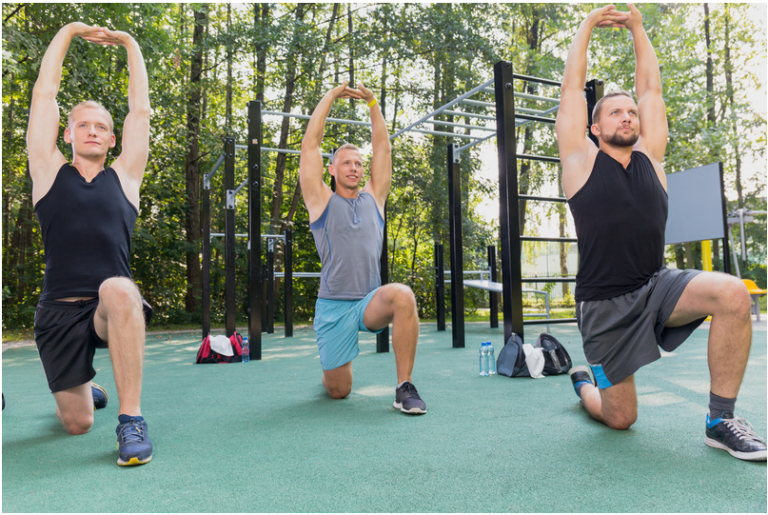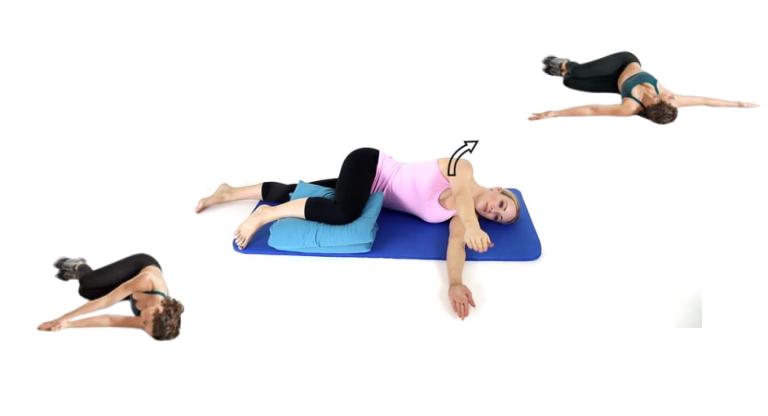
5 Effective Stretching of Scalene Muscles for Neck Pain Relief and Rehabilitation

Do you often experience neck pain, stiffness, or tension? If so, you might have tight scalene muscles. These muscles run along the sides of your neck, from the base of your skull to your collarbone. They help you tilt, rotate, and flex your neck and breathe deeply. However, when they become tight or overworked, they can cause pain, discomfort, and reduced range of motion in your neck.
In this article, you will learn how to stretch your scalene muscles and why it is important. You will also discover the causes and symptoms of tight scalene muscles and how to prevent them from becoming problematic. Following the simple and effective exercises in this article, you can target your scalene muscles, relieve neck pain, and improve your posture and breathing.
Key Takeaways
- The scalene muscles are important for neck movement and breathing but can become tight and cause pain and discomfort.
- Stretching the scalene muscles can help relieve neck pain and improve posture and breathing, and there are different exercises to target each scalene muscle.
- Preventing tight scalene muscles and neck pain requires good posture, frequent breaks, stress management, injury avoidance, and thoracic outlet syndrome treatment.
What are the scalene muscles, and what is their function?
The scalene muscles are a group of three muscles that are located on each side of your neck. They are named according to their position and shape: the anterior scalene, the middle scalene, and the posterior scalene. The anterior scalene is the most forward and the shortest of the three; the middle scalene is the longest and the most lateral; and the posterior scalene is the most backward and the smallest.
The scalene muscles have two main functions: to move your neck and to assist your breathing. They help you tilt your head to the side, rotate your head to the opposite side, and flex your neck forward. They also elevate your first and second ribs during inhalation, which increases the space in your chest cavity and allows more air to enter your lungs.
What are the causes and symptoms of tight scalene muscles?

Tight scalene muscles can be caused by various factors, such as:
- Poor posture, especially forward head posture, where your head is protruding forward and your chin is tilted up, puts excessive strain on your neck muscles and compresses your cervical spine.
- Repetitive or prolonged activities involve tilting, rotating, or flexing your neck, such as looking at your phone, computer, book, driving, or sleeping in an awkward position.
- Stress, anxiety, or emotional tension can make you clench your jaw, shrug your shoulders, or hold your breath, all of which tighten your neck muscles.
- Trauma or injury to your neck, such as whiplash, sprain, or strain, can damage your scalene muscles or cause inflammation and scar tissue.
- Thoracic outlet syndrome is when the nerves or blood vessels that run from your neck to your arm are compressed by your scalene muscles, collarbone, or first rib. This can cause pain, numbness, tingling, or weakness in your arm or hand.
Symptoms
The symptoms of tight scalene muscles can vary depending on the severity and location of the tightness (1). Some common symptoms include:
- Neck pain, stiffness, or soreness, especially on the side of your neck or at the base of your skull,
- Reduced range of motion in your neck, making it difficult to tilt, rotate, or flex your neck.
- Headaches, especially at the back or side of your head or behind your eye,
- Shoulder pain, especially on the same side as the tight scalene muscle.
- Arm or hand pain, numbness, tingling, or weakness, especially on the same side as the tight scalene muscle.
- Difficulty breathing deeply, especially when lying down or exercising.
How do you stretch your scalene muscles and relieve your neck pain?
Stretching your scalene muscles can help you loosen them, relieve neck pain, and improve your posture and breathing. Here are some simple and effective exercises you can do at home or work to stretch your scalene muscles. You will need a chair, a towel, and a wall for some of the exercises. Before you start, warm up your neck by doing gentle neck rotations and tilts. Also, remember to breathe deeply and slowly throughout the exercises and avoid holding your breath or tensing your shoulders.
1. Anterior scalene stretch
The anterior scalene stretch targets the anterior scalene muscle, the most forward and the shortest of the three scalene muscles. To do this stretch, follow these steps:
- Sit on a chair with your back straight and your feet flat on the floor.
- Place your right hand behind your back and grab the edge of the chair with your fingers.
- Tilt your head to the left, bringing your left ear towards your left shoulder. You should feel a stretch on the right side of your neck.
- Rotate your head slightly to the left, looking down at your left armpit. You should feel a deeper stretch on the right side of your neck, especially along the front.
- Hold this position for 30 seconds, then slowly return to the starting position.
- Repeat on the opposite side.
2. Middle scalene stretch
The middle scalene stretch targets the middle scalene muscle, the longest and most lateral of the three scalene muscles. To do this stretch, follow these steps:
- Sit on a chair with your back straight and your feet flat on the floor.
- Place your right hand behind your back and grab the edge of the chair with your fingers.
- Tilt your head to the left, bringing your left ear towards your left shoulder. You should feel a stretch on the right side of your neck.
- Rotate your head slightly to the right, looking up at the ceiling. You should feel a deeper stretch on the right side of your neck, especially along the side.
- Hold this position for 30 seconds, then slowly return to the starting position.
- Repeat on the opposite side.
3. Posterior scalene stretch
The posterior scalene stretch targets the posterior scalene muscle, the most backward and the smallest of the three muscles. To do this stretch, follow these steps:
- Sit on a chair with your back straight and your feet flat on the floor.
- Place your right hand behind your back and grab the edge of the chair with your fingers.
- Tilt your head to the left, bringing your left ear towards your left shoulder. You should feel a stretch on the right side of your neck.
- Rotate your head slightly to the left, looking straight ahead. You should feel a deeper stretch on the right side of your neck, especially along the back.
- Hold this position for 30 seconds, then slowly return to the starting position.
- Repeat on the opposite side.
4. Towel neck stretch
The towel neck stretch is a variation of the scalene stretch that uses a towel to increase the intensity and effectiveness of the stretch. To do this stretch, follow these steps:
- Sit on a chair with your back straight and your feet flat on the floor.
- Fold a towel in half and wrap it around the back of your neck, holding one end in each hand.
- Pull the towel down with your hands, slightly pressuring the back of your neck.
- Tilt your head to the left, bringing your left ear towards your left shoulder. You should feel a stretch on the right side of your neck.
- Rotate your head slightly to the left, looking down at your left armpit. You should feel a deeper stretch on the right side of your neck, especially along the front.
- Hold this position for 30 seconds, then slowly return to the starting position.
- Repeat on the opposite side.
5. Wall neck stretch
The wall neck stretch is another variation of the scalene stretch that uses a wall to increase the intensity and effectiveness of the stretch. To do this stretch, follow these steps:
- Stand next to a wall with your right shoulder and right side of your body facing the wall.
- Place your right hand on the wall at shoulder level and extend your arm straight.
- Tilt your head to the left, bringing your left ear towards your left shoulder. You should feel a stretch on the right side of your neck.
- Rotate your head slightly to the left, looking down at your left armpit. You should feel a deeper stretch on the right side of your neck, especially along the front.
- Hold this position for 30 seconds, then slowly return to the starting position.
- Repeat on the opposite side.
How do you prevent tight scalene muscles and neck pain?

Stretching your scalene muscles can help you relieve your neck pain, but it is also important to prevent them from becoming tight in the first place. Here are some tips to help you prevent tight scalene muscles and neck pain:
- Maintain good posture, especially when sitting or working at a desk. Keep your head aligned with your spine, your legs relaxed, and you’re tucked in. Avoid slouching, hunching, or protruding your head forward.
- Take frequent breaks from activities that involve tilting, rotating, or flexing your neck, such as looking at your phone, computer, book, driving, or sleeping awkwardly. Move your neck gently in different directions, and stretch your scalene muscles regularly.
- Manage your stress, anxiety, or emotional tension, which can make you clench your jaw, shrug your shoulders, or hold your breath. Relax, breathe deeply, and practice mindfulness, meditation, or other coping strategies.
- Avoid trauma or injury to your neck, such as whiplash, sprain, or strain, which can damage your scalene muscles or cause inflammation and scar tissue. Wear a seat belt or wheelchair, and seek medical attention if you experience pain or discomfort after an accident.
- Treat thoracic outlet syndrome occurs when your scalene muscles, collarbone, or first rib compress the nerves or blood vessels that run from your neck to your arm. This can cause pain, numbness, tingling, or weakness in your arm or hand. If you suspect you have thoracic outlet syndrome, consult your doctor or a physical therapist for diagnosis and treatment.
Summary
In summary, here are the main points to remember:
- The scalene muscles are a group of three muscles that run along the sides of your neck, from the base of your skull to your collarbone. They help you move your neck and breathe deeply.
- Tight scalene muscles can cause neck pain, stiffness, reduced range of motion, headaches, shoulder pain, arm or hand pain, numbness, tingling, weakness, and difficulty breathing deeply.
- Stretching your scalene muscles can help you loosen them, relieve neck pain, and improve your posture and breathing. You can do the anterior scalene stretch, the middle scalene stretch, the posterior scalene stretch, the towel neck stretch, or the wall neck stretch to target your scalene muscles.
- To prevent tight scalene muscles and neck pain, maintain good posture, take frequent breaks from activities that involve tilting, rotating, or flexing your neck, manage your stress, anxiety, or emotional tension, avoid trauma or injury to your neck, and treat thoracic outlet syndrome if you have it.
I hope you found this article helpful and informative. If you have any questions or feedback, please leave a comment below. Thank you for reading, and happy stretching!



